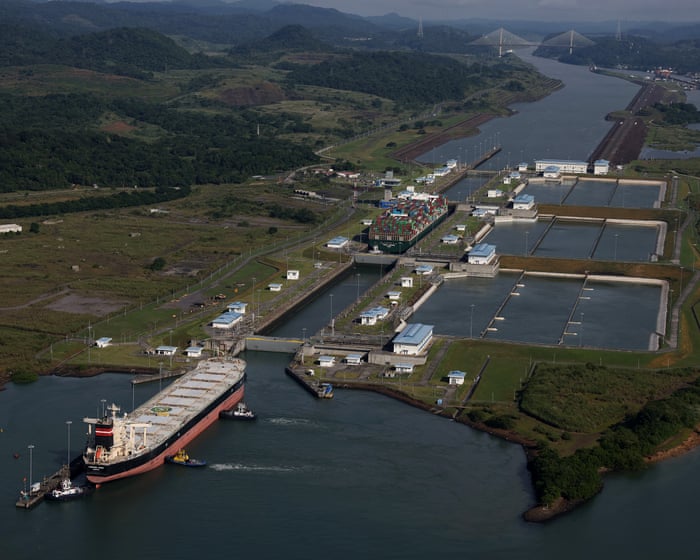At an open-air market in Belém, Brazil, I faced a breakfast dilemma. I was thirsty, but the long list of fruit juices was bewildering. Besides pineapple (abacaxi) and mango (manga), I didn’t recognize any of the other options. What were bacuri, buriti, and muruci? And what about mangaba, tucumã, and uxi? Even my phone was stumped—it told me “uxi” means “you are” in Zulu.
Then I began to recall names from my six-week journey from the Andes to the Amazon’s mouth. I recognized cucuaçu; I’d picked a similar cacao-like pod in a Colombian village about 3,000 kilometers upstream. Even farther back, in Peru, I encountered açaí, a purple berry that grows high on wild palms. The Amazon is immense and diverse, yet strikingly consistent along its vast length.
My Amazon adventure started with a sustainable tourism conference in Peru. In 2023, Belém, on the other side of South America, was chosen to host the Cop30 conference. Eager to reduce my carbon footprint, I traveled downriver by public boat toward Belém, connecting with people dedicated to preserving this remarkable environment. I joined night walks where guides blew herbal powders up my nose to keep me alert, swam across the river (and heard plenty of electric eel tales), and often found myself unsure which country I was in. Until I reached Manaus, I encountered few tourists, but I constantly pondered tourism’s potential role in the Amazon’s future.
The notion that tourism could help combat climate change and biodiversity loss is complicated. Flying is the most carbon-intensive form of travel, and tourism is a luxury. Shouldn’t we stop privileged travelers from jetting around for indulgent rainforest tours to save the planet?
On the Mamori River, a tributary in central Brazil, surrounded by forest fire smoke, a schoolboy offered a sobering perspective. “My father is a rancher,” he said. “We burn the forest for pasture and sometimes sell the cleared land, but the jungle itself is worthless. I don’t want to be a rancher; I want to be a tour guide.” His teacher later confirmed that many local teens share this sentiment, preferring tourism over the grueling work of land clearing, but opportunities are scarce due to few visitors and limited support from NGOs.
Life for ranchers is harsh and unrewarding, trapping them in a cycle of deforestation with no easy escape.
Back in Belém, after finishing my juice, I explored the market with my guide, Junior, who suggested the local favorite: fried fish with açaí berry sauce. He explained that açaí is profitable for small farmers, as they can grow it around their homes alongside other trees.
In the Peruvian village where I first saw açaí, locals said it was once just a wild “emergency” food but now brings good income. Their traditional turtle hunting had ended due to dwindling numbers and a government ban, leaving poaching in the national park as their only option until açaí provided a sustainable alternative.My companion and I set off to explore the river islands beyond the Belém waterfront, making our way to the small green atoll of Ilha do Combu. A little wooden ferry carried us up a narrow creek, where lush vegetation and watchful kingfishers lined the banks. There, we met Charles, who runs a small handicraft shop and sells his own açaí. “It goes with anything,” he told me. “We eat it with fish or make ice cream.”
We walked through groves of mixed palms, cacao, and dozens of other trees. Above us, scarlet macaws chattered noisily, and a family of giant fruit bats seemed to complain about the racket. This diverse landscape provides income while benefiting nature. I picked up a beautiful seed the size of an egg. “Rubber,” Charles said. “We do collect it, but not in commercial quantities.”
In the late 19th century, the discovery of rubber set off a series of catastrophic events that still affect the Amazon today. Hailed as a wonder product, it sparked a rush of exploitation. Fortunes were made—in Iquitos, 2,700 miles upriver from Belém, merchants imported bottled water from Belfast and sent their laundry to Lisbon.
For most Amazonian people, however, rubber was a disaster. Forced into harsh labor, tribes were scattered and broken, their languages and cultures damaged. After seeds were smuggled to Asia in 1876—via Kew Gardens, where they were germinated—the boom ended, leaving behind bitterness and suspicion.
Açaí hasn’t had the same impact, but it’s not without controversy. Exaggerated claims about superfoods have hurt its reputation. But on Ilha do Combu, Charles wasn’t worried. Local demand was strong, and prices were good.
The next day, I took the ferry to Ilha Cotijuba near the river’s mouth. The Amazon had one more surprise for me. On the far side of the island, I found a small café on the beach. The owner, Lena, served a delicious lunch: river fish baked in banana leaves, pineapple ceviche, and a dessert made with pale green berries I’d never seen before.
“Like açaí,” she told me, “but different.”
Hidden away on those islands, the Amazon still holds its secrets.
Frequently Asked Questions
Of course Here is a list of helpful FAQs about a sixweek riverboat expedition from the Andes to the Amazon ending in Belém
Planning Preparation
What exactly is this journey
Its a sixweek expedition traveling by riverboat from the headwaters of the Amazon in the Andes mountains all the way to the Atlantic Ocean at Belém Brazil following the entire course of the river
Do I need a visa
Yes you will need visas for the countries you pass through most notably Peru Colombia and Brazil Its crucial to check requirements well in advance
Whats the best time of year to go
The drier season offers better hiking and fewer mosquitoes The wet season allows the boat to explore more flooded forests
What should I pack
Pack light quickdrying clothing a strong rain jacket sturdy waterproof shoes a widebrimmed hat highDEET insect repellent a reusable water bottle and a good power bank for charging electronics
Do I need any vaccinations
Yes you will likely need a Yellow Fever vaccine and should be uptodate on others like Typhoid and Hepatitis A Consult a travel clinic for the most current advice
Life on the Riverboat
What are the accommodations like
They range from basic with simple cabins and shared bathrooms to more comfortable boats with private facilities All are designed to be functional on the river
Is there internet or phone service
Connection is very limited and often nonexistent for long stretches This is a true expedition so prepare to be disconnected
What will we eat
Meals are typically prepared on board and consist of local foodslots of fresh fish rice beans plantains and tropical fruits
Is the drinking water safe
On the boat they will provide safe drinking water either purified or bottled Never drink water directly from the river or tap
Whats a typical day like
Days involve cruising with stops for guided excursions like jungle hikes village visits wildlife spotting in skiffs and swimming in safe areas Evenings are for relaxing meals and briefings
The Route Experiences
Where does the journey actually start
It begins high in the Peruvian Andes near a town like N




